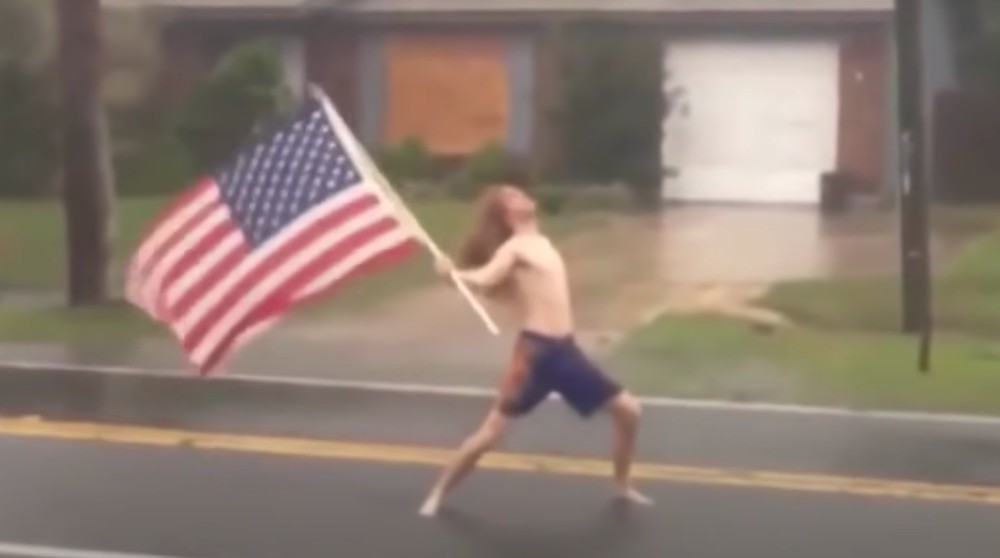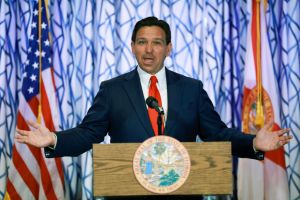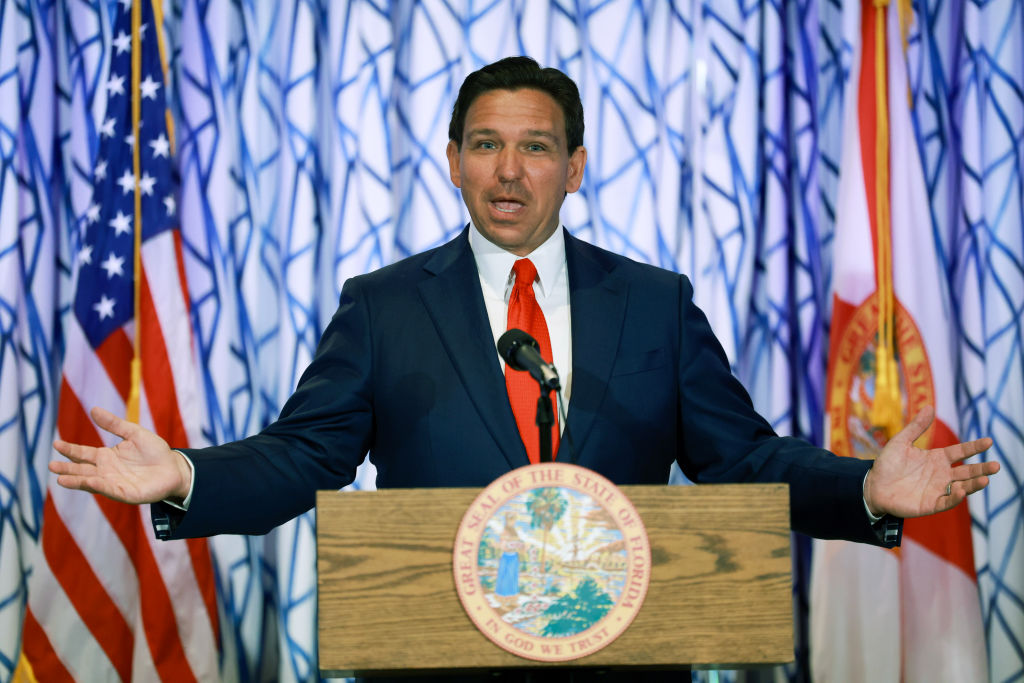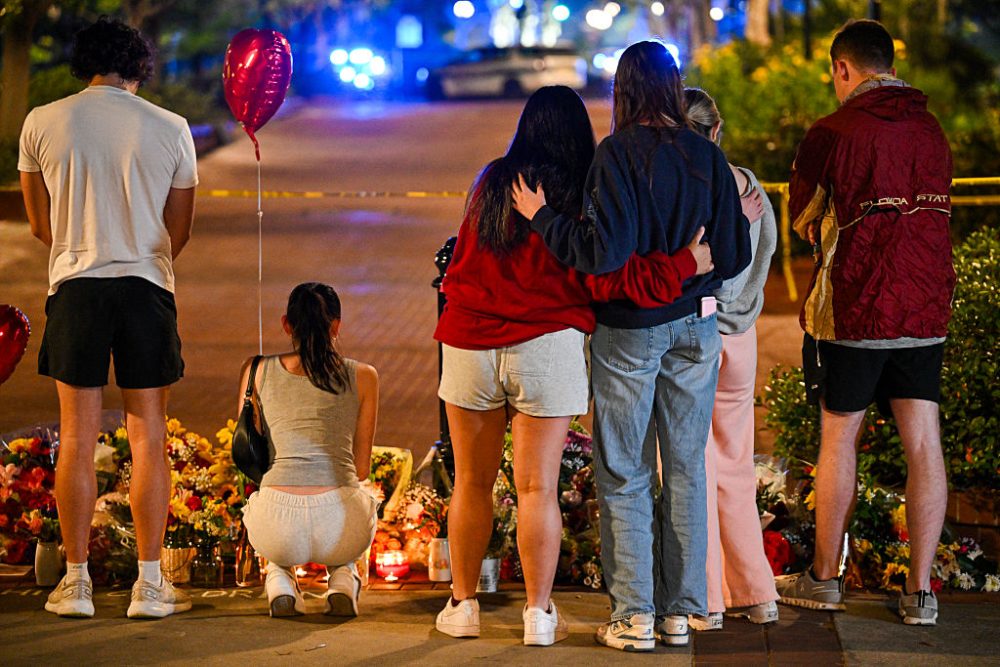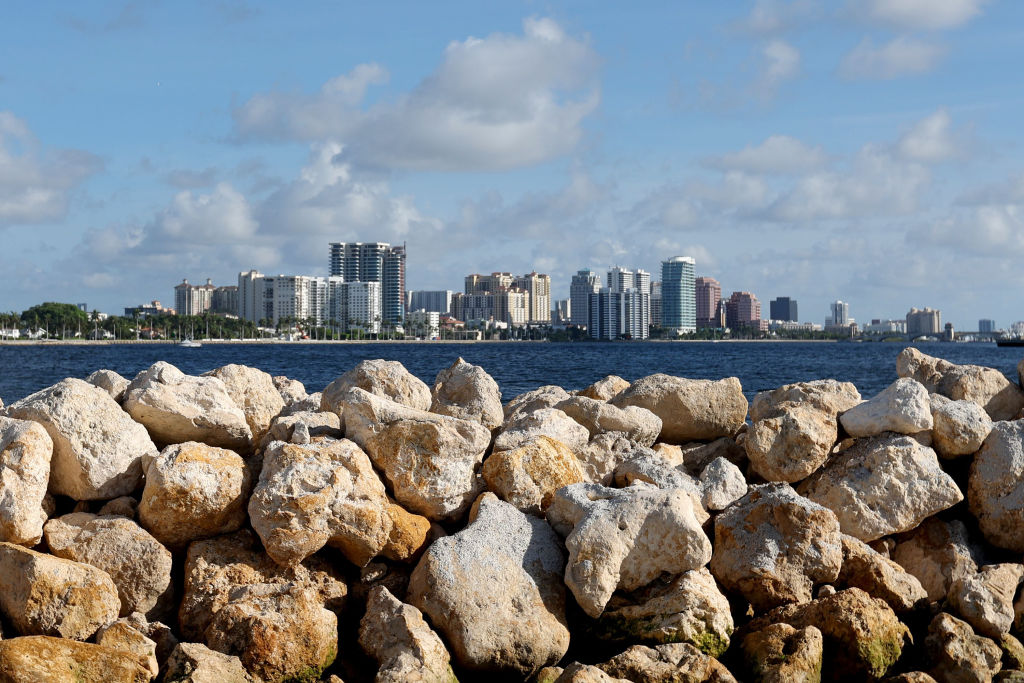“DO NOT shoot weapons [at] #Irma,” the sheriff’s office of Pasco County, Florida, posted when Hurricane Irma approached our free state’s Atlantic coastline in 2017. “You won’t make it turn around [and] it will have very dangerous side effects.”
The danger of stray bullets was all too clear to those who failed to detect the sarcasm behind 22-year-old Ryon Edwards’s mock Facebook event, “Shoot at Hurricane Irma,” which appeared to invite his fellow Floridians to open fire on the storm.
Edwards’s message, “Let’s show Irma that we will shoot first,” attracted over 86,000 responses. Most were funny pictures and memes mocking the #FloridaMan stereotype. But the joke also made it into the international media, which scolded our state for its gun culture and supposed ignorance. “People like Ryon are going to shoot at Hurricane Irma,” somberly intoned the BBC.
Edwards was surprised by his fifteen minutes of fame. He later commented that “the joke may have gone over many people’s heads,” adding that it resulted from a “combination of stress and boredom” after watching the local news media’s monotonous predictions of massive damage from Irma, which struck Florida as a Category 4 storm. Category 4 hurricanes pack winds of 130 to 156 miles per hour. Irma’s projected path covered the entire state.
Edwards need not have worried. Then led by Governor Rick Scott, now Florida’s junior senator, the state snapped into action with impressive efficiency. Within days of declaring a state of emergency, Scott mobilized all 7,000 Florida National Guard troops, opened more than 700 shelters that eventually housed nearly 200,000 people, and oversaw the evacuation of some 6.8 million Floridians. It was the largest evacuation in state history, involving about one third of all Florida residents. About 24,000 technicians were mobilized to restore power once the storm passed. All told, Irma inflicted over $50 billion in damage but claimed fewer than a hundred lives throughout the United States. In Florida, more than half of power outages were restored within 48 hours of landfall, with virtually all restored within a week.
As Hurricane Ian now churns toward Sarasota County on Florida’s Gulf Coast, Governor Ron DeSantis has responded with equally admirable efficiency. While other states use the National Guard to remove Hispanic migrants from affluent liberal white communities, DeSantis has mobilized 5,000 Guardsmen and 28,000 linemen. An additional 2,000 Guardsmen from other states have also been mobilized. At this writing, 2.5 million Floridians are under a mandatory evacuation order.
Only two weeks ago, DeSantis led commemorations of Irma’s fifth anniversary, commenting, “I’m proud of the work that we’ve accomplished to improve the resiliency of our communities and equip them to face future storms.” State response services have been streamlined and improved in the intervening time, and the Florida Department of Economic Opportunity has granted nearly $700 million in direct aid to affected homeowners and communities. DeSantis was on the ground in Sarasota where he met with county officials. “I encourage Floridians to ensure they are prepared,” he tweeted in anticipation of his first natural disaster as governor.
Floridians are fully in sync with their governor’s call. Robert Macomber, an award-winning writer of historical fiction and Florida native who lives on Pine Island, recommends establishing an evacuation plan and stocking supplies by June at the latest, and during a hurricane staying away until the streets are clear and power is restored. “It is much better — and safer — to watch the hurricane on TV, with a glass of decent wine or a martini in hand, in an air-conditioned room far away than play the martyr by trying to endure it in situ,” he wrote me the day before Ian arrived. “Onward and upward,” he signed off, using the signature slogan of his character Peter Wake, the US naval officer protagonist of his fifteen “Honor” series novels.
David McClymont, a Palm Beach County native and CEO of the Palm Beach Symphony, agrees. “Always be prepared before you have to be prepared,” he messaged me. “Become familiar with the evacuation routes,” he advises, adding that populations under threat should stock up on food, fuel, water, medical supplies, batteries, tools, and other supplies. “Most important,” McClymont, a competitive surfer, adds, “make sure you have plenty of surf wax in case the storm does not hit your area but produces large surf so you can surf huge, unusual waves.”
Some don’t even need to wait for an evacuation order. Facing a Category 5 hit on Palm Beach by Hurricane Dorian in 2019, my wife and I packed up our then four-year-old son and drove north to a friend on Sea Island, Georgia, one day before mandatory evacuation orders sent all of our neighbors onto the same roads. Dorian abruptly turned north, forcing us to then leave Sea Island, before it found landfall in North Carolina. We found safety inland, in Milledgeville, Georgia, home of the great Southern writer Flannery O’Connor, whose house museum we toured. We then drove up the Shenandoah to our place in Washington, where we waited until a return south became possible.
As Ian bears down, even the usual Florida skeptics are muted — apart from the occasional New Yorker who disdains our state’s unpredictable weather. Yet he conveniently forgets that last year’s Hurricane Ida passed us by and hit the New York area instead, where more than 40 people died and the city’s iconic subway was devastated by flash floods. In 2012, Hurricane Sandy did only minor damage to Florida, but killed 53 New Yorkers, left over two million without power, and spilled nearly 10 billion gallons of sewage into the surrounding waters.
Few seem to remember Ryon Edwards’s stunt of five years ago, though a video of a shirtless man waving an American flag in the middle of a street during Hurricane Matthew, which brushed the Florida coast in 2016, is making the rounds. Who knows what substance he was on? Let no one say that Florida Man doesn’t know which way the wind is blowing.
Paul du Quenoy is president of the Palm Beach Freedom Institute



